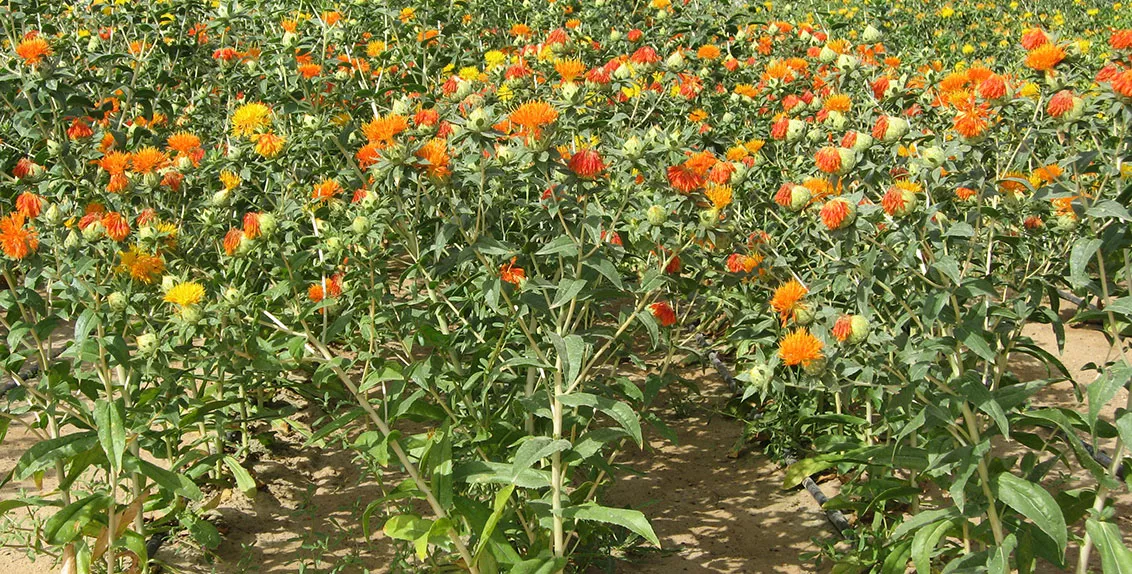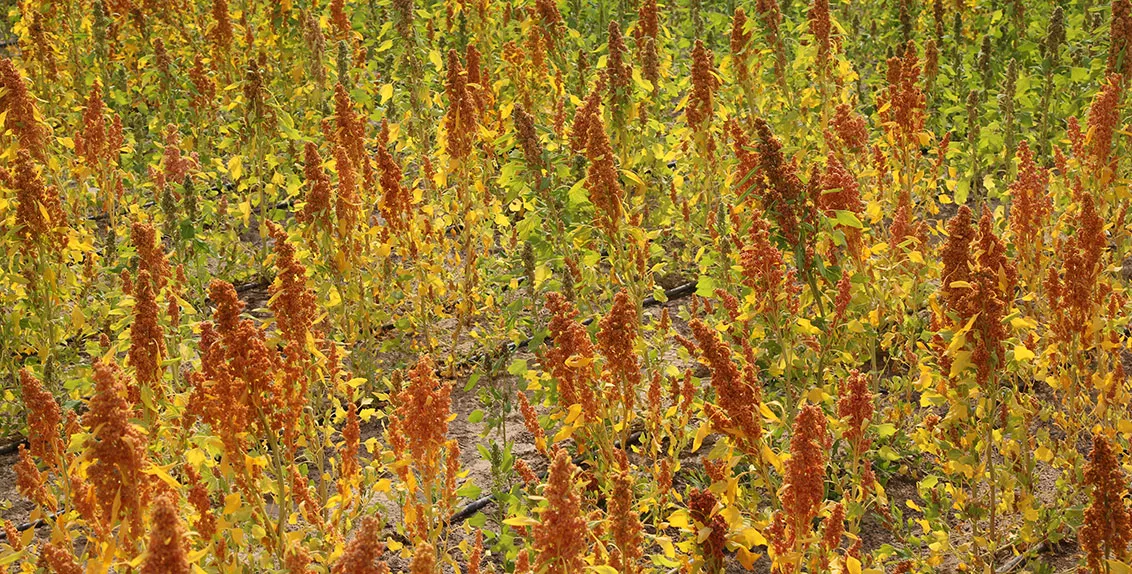Researchers look to salt-tolerant crops for the future of agriculture in Middle East, North Africa
Two studies, recently published by a team of scientists at the International Center for Biosaline Agriculture (ICBA), look into how salt-tolerant crops like safflower and quinoa can help farmers cope with rising soil and water salinity in the Middle East and North Africa (MENA).
The MENA region is home to an estimated 380 million people and is rapidly becoming one of the most urbanized areas of the world, adding pressure on an already fraught agricultural system. Approximately one third of land in the region is forecast to face constraints to crop production as a result of climate change. As a result, rural livelihoods are threatened, which could drive even higher migration rates to urban centers. Due to its arid nature, the UAE, where the two studies were conducted, relies heavily on food imports to feed its growing population. Dry conditions, coupled with a changing climate, restricts crop production and places a heavy burden on water resources. Soil salinity, or soil’s salt content, is another major barrier to crop production and is exacerbated by limited rainfall, high temperatures, and overuse of groundwater resources. All of these factors, which are prevalent in the UAE, limit the amount of food the country can produce itself.
Put succinctly, food security in the country and the region as a whole will depend in part on identifying and growing crops that are better suited to harsh environmental conditions.
The authors of the papers set out to examine the issue of soil salinity and crop production by studying genotypic variations of safflower (Carthamus tinctorius L.) and quinoa (Chenopodium quinoa Willd.) plants. Safflower, an oil seed crop, not only has multiple commercial uses, but, due to its deep root system, is especially suitable to arid regions and sandy soils. The nutritious quinoa crop, a native to the South American Andes, is a hardy plant with high drought and salinity tolerance.
Scientists examined six genotypes from each plant species, finding that, while soil salinity reduced crop production, tolerant genotypes were still able to produce under adverse conditions. Among other variables, both studies examined the crop’s intrinsic water use efficiency (iWUE), as a plant’s water efficiency provides important information about its tolerance to difficult environmental conditions. Quinoa proved to be especially resilient as the plant’s ability to change its leaf water potential helps it maintain rigidity and reduce transpiration, qualities which are especially useful in dry, saline environments. Similarly, the safflower genotypes demonstrated high salinity tolerance, with researchers pointing to the plant’s deep rooting system as a beneficial trait in low quality soils. For both crops, researchers noted the importance of genotype developments that would allow plants to increase their water use efficiency and yields.
Taken together, these results provide important insights into the future of agriculture in the UAE and the MENA region as a whole. Climate change scientists note the likelihood of increased temperatures, droughts, floods, and decreased soil quality throughout MENA countries. Both food and economic security in the region will benefit from identifying and developing crops that are nutritious, commercially viable, and able to withstand the growing uncertainty that comes with climate change.

